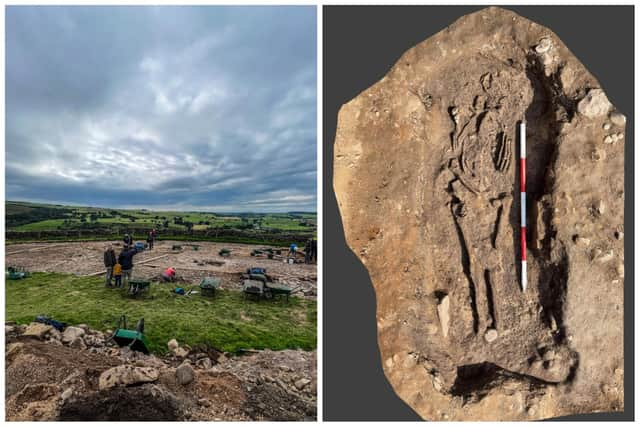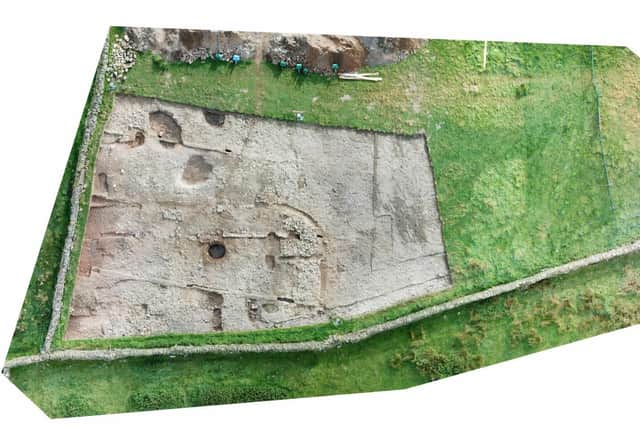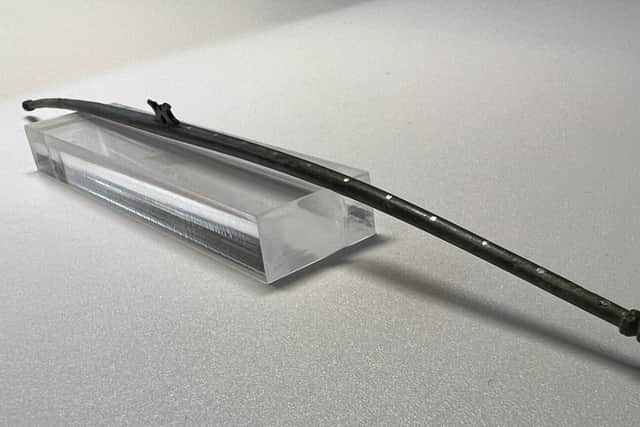Skeleton discovered among other unexpected surprises from a Hadrian's Wall excavation project
and live on Freeview channel 276
The five-year research project on Magna Roman Fort commenced in July with The Vindolanda Charitable Trust’s archaeologists and volunteers from around the world.
The project has made many exciting discoveries since starting, including a delicate and very rare beam from a dual balance, which was uncovered in the first few weeks.
Advertisement
Hide AdAdvertisement
Hide AdThis specialist type of weighing instrument combined elements of an equal balance and a steelyard. Weights could either be placed in one of the hanging pans or hung at different points along the arm marked by the silver dot insets.


Rachel Frame, senior archaeologist at the Magna site said: “We now know that this is one of only twelve examples of a dual balance found in the UK and the first to be found on Hadrian’s Wall. It gives us a glimpse of daily life at the milecastle, with potentially high value items being weighed on such a delicate instrument.”
Although no evidence of buildings was found, the team did make an unexpected discovery of a clay-lined well close to the East wall. Wells are an exciting discovery because of the high potential for waterlogged or anaerobic preservation within, and because they aren’t typically found within milecastles.
The well was backfilled once it was no longer in use and had been packed with heavy stone rubble and facing stones, likely from the milecastle walls. This had allowed the lower deposits to remain waterlogged and semi-anaerobic, preserving organic material such as timber, leather and rope.
Advertisement
Hide AdAdvertisement
Hide AdRachel commented: “We certainly did not anticipate any organic finds in year one of the project. The discovery of the well along with the deposits that it held will give us valuable information about the use of the milecastle.”


Outside the milecastle, a series of very large irregular pits to the east of the wall were discovered. The similarities between them suggest that they may have all had the same purpose and were in use at the same time. Current interpretations are that they were most likely for industrial activities but there were very few clues as to their exact use found during the excavation.
Rachel said: “These pits are a mystery, but it is hoped that detailed analysis of the environmental soil samples that have been taken will help shed some light on their function.”
The greatest surprise was uncovered more recently in the excavation’s last few weeks.
Advertisement
Hide AdAdvertisement
Hide AdA stone lined cist grave was discovered outside the milecastle’s walls nestled in the corner between the east wall of the milecastle and Hadrian’s Wall. It contained the remains of a single individual who appears to have been wrapped in a shroud before burial, suggesting the person was buried here deliberately and with care while the milecastle walls were still standing, most likely in the late Roman period.


Rachel added: “Burials at Hadrian’s Wall itself are rare, with only a handful of other examples known from sites along the wall. The discovery of this person has the potential to give us significant information about life at this site in the late Roman period. The skeleton was fragmentary but crucially we have some of the teeth. They will enable us to find out more about this mystery individual, including information about their diet, lifestyle and origin.”
Helen Featherstone, Director, England, North at The National Lottery Heritage Fund, said: “It’s fantastic news that the excavations at Magna Roman Fort are uncovering such exciting heritage. We are thrilled that we are supporting the project with funding made possible thanks to National Lottery players, to conserve and save these fascinating stories that are being unearthed.”
Research on the human remains, soil samples and artefacts uncovered during the dig will continue over the winter before excavations at the site resume in April 2024.
A limited number of volunteer places are still available for the 2024 season and can be booked through the Roman Army Museum website.